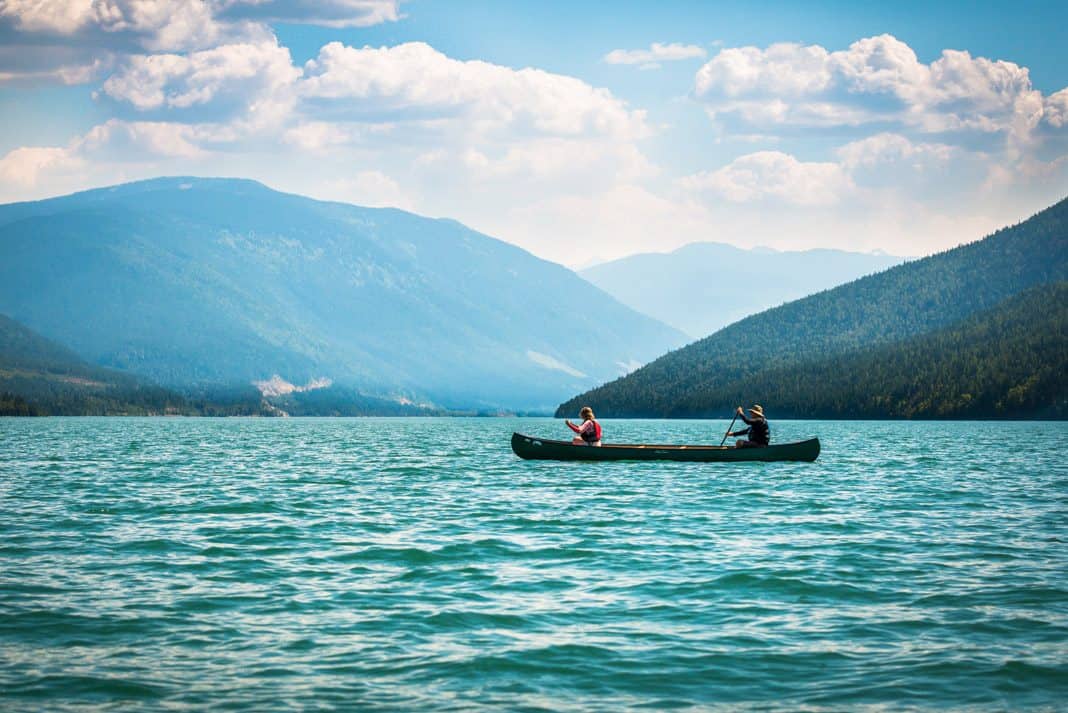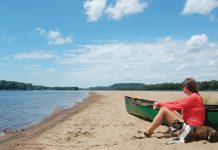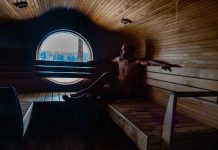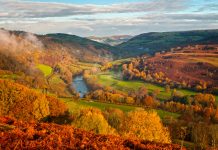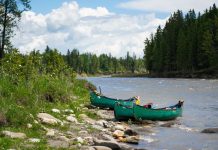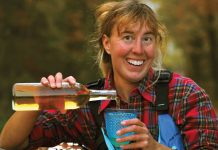If explorer and cartographer David Thompson were to map the Columbia River today, he might find it substantially easier than the journey he took more than 200 years ago. For starters, the aptly named Dalles des Morts (Death Rapids) met their own untimely death in the mid-’80s when the waterway was dammed.
Today, in the place of rapids, sits a calm reservoir known as Lake Revelstoke.
While Lake Revelstoke may be manmade, it appears anything but unnatural. Many of the landscape’s features still appear much as they would have in Thompson’s day. The 125-kilometer stretch of water is surrounded by the world’s only inland temperate rainforest, with glacier-capped peaks filling in views on every side.
Lush and green in the summertime, the mountainsides are even more breathtaking in autumn when golden larches prepare to lose their needles. Shores lined with huckleberries are visited by bears, elk and wolves, and waterfalls trickle around every corner.
It’s a lake made for paddling—
Much of the western shore’s secret beaches and hidden coves can only be accessed by water, while Highway 23 provides ample access along the length of the east side.
On a calm mid-summer Saturday morning, we don’t see another boat out on the glassy water. According to tour guide Amy Flexman, it’s just a typical day on Lake Revelstoke. “It’s easily accessible, but it’s never busy,” says Flexman, owner of outfitter Flexpeditions. “You have a feeling like you might be the only one who has ever set foot on the piece of wilderness you are exploring. The vastness is the beauty of it.”
Plan your trip to Lake Revelstoke
If you have a half day:
Put in at the public boat launch above Revel- stoke Dam and head north towards Martha Creek. A few hours is all you need to discover hidden rocky beaches. On windy days, the Columbia River just south of the town of Revelstoke might be a better bet. There, paddle marshy edges at Arrowhead, a former steamboat port that flooded when the dam was built.
If you have a day:
Plentiful snow melt from the surrounding mountains means epic waterfalls. The best way to chase them? From on the water. A circuit starting from Blanket Creek Provincial Park will take you to three waterfalls flowing into the Columbia River, including one with a drop of over 300 feet.
If you have a weekend:
Spend your time exploring all the nooks and crannies near Carnes Creek. Only a 30-minute drive north of the town of Revelstoke, it’s also the site of a camping area with incredible vistas. For a more adventurous weekend, launch on the faster-moving Columbia River. Beginning at the town of Revelstoke, head south to Shelter Bay, stopping to overnight on the wild shore along the way.
If you have a week:
Follow the path David Thompson made in 1811 as he charted the area. Launching at Mica Creek, head south until you can’t paddle south anymore. While the trip can be rushed in three days, stretching it out over a week provides plenty of time to explore the lake’s fjords, inlets and waterfalls.
Things you should know about Lake Revelstoke
Weather:
Multiple outfitters offer canoe and kayak rentals, shuttle service and guided tours, including Flexpeditions (www.flexpeditions.com) and Natural Escapes (www.naturalescapes.ca). For standup paddleboard rentals and tours, contact Fine Line SUP (www.finelinesup.com).
Don’t miss:
Launched in 2017, the Revelstoke Paddle Challenge follows the route David Thompson took over 200 years ago and the route the Secwépemc people used before that. Over three days in July, paddlers travel up to the full 125 kilometers (www.paddlerevelstoke.ca). In August is the nearby Jordan River Festival and Race.
Digital detox:
North of Revelstoke Dam, there’s no cell phone reception. For longer excursions, consider packing a satellite phone or communications device, which can be rented locally from Outdoor Logistics (www.outdoorlogistics.ca).
Diversions:
Year-round, you might spot moose, bighorn sheep and even caribou. However, autumn is the time to visit if you want to see the salmon run, and when salmon and trout flood the creeks and rivers.
Did You Know?
The Columbia River was once home to sturgeon-nosed canoes. Distinctive watercraft built by the area’s First Nations people, the canoe is immediately recognizable from the unusual reverse slope of its bow and stern.



